Archivo de noticias y eventos
601 - 650 de un total de 2379
También puede acceder a la lista de noticias publicadas en los medios relacionadas con el Instituto de Astrofísica de Andalucía - CSIC.
Pages

|
05/11/2020
Se publica el nuevo catálogo del cartografiado J-PLUS, con casi veinte millones de objetos celestes El Instituto de Astrofísica de Andalucía (IAA-CSIC) participa el proyecto, coordinado por el Centro de Estudios de Física del Cosmos de Aragón (CEFCA) |

|
28/01/2021 - 18:00
SO Web-Colloquia: Vera C. Rubin Observatory: A Big Data Machine for the 21st Century Vera C. Rubin Observatory and its Legacy Survey of Space and Time (LSST) boasts an 8.4-m diameter mirror, a camera the size of a bus, and a 3.2-gigapixel detector. It will image the entire southern sky from Chile every few nights beginning in 2023, and enable astrophysics on all scales, from near-Earth asteroids to cosmic acceleration. With nightly data volumes around 20 TB and a final data release of 15 PB, LSST is ushering in a new paradigm... Dr. Meredith Rawls |
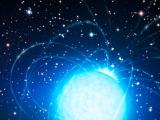
|
04/11/2020
Se detectan rápidos estallidos de radio en nuestra Galaxia La identificación de una fuente productora de ráfagas de radio de muy corta duración en nuestra propia galaxia, la Vía Láctea, se presenta en tres artículos en la revista Nature. Los estudios apuntan a que un magnetar, una estrella de neutrones con un campo magnético muy intenso, se hallaría tras este fenómeno |
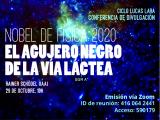
|
29/10/2020 - 19:00
Nobel de Física 2020: el agujero negro de la Vía Láctea Andrea Ghez y Reinhard Genzel fueron galardonados con el Premio Nobel en Física 2020 por su descubrimiento del agujero negro masivo en el centro de la Vía Láctea. En mi charla repasaré la historia de su trabajo de investigación desde un punto de vista en primera línea (por haber trabajado estrechamente con los dos investigadores en este tema). Explicaré los métodos y medidas que usaron y la fuerza de sus resultados. Rainer Schödel |
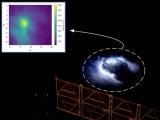
|
23/10/2020
Confirman la existencia de un nuevo fenómeno eléctrico en la atmósfera: destellos azules producidos por descargas eléctricas frías A diferencia de los rayos, estas descargas eléctricas activan muy eficientemente ciertas reacciones químicas que pueden producir óxido nitroso y ozono, gases que contribuyen al efecto invernadero. El estudio, encabezado por investigadores del Instituto de Astrofísica de Andalucía (IAA-CSIC), ha sido posible gracias a los datos proporcionados por la misión espacial ASIM de la Agencia Espacial Europea (ESA) |
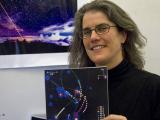
|
23/10/2020
El Centro Galáctico: un laboratorio único para el estudio de los agujeros negros Andrea Ghez, premio Nobel de Física 2020, impartirá una conferencia online sobre el centro de la Vía Láctea el próximo jueves 29 de octubre |
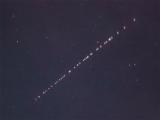
|
20/10/2020
SKA alerta del impacto de las megaconstelaciones de satélites La Organización SKA (SKAO) – que lidera la construcción del proyecto internacional del Square Kilometre Array (SKA) – ha realizado un análisis preliminar del impacto potencial de las actuales megaconstelaciones de satélites en sus telescopios. El análisis cuantifica este impacto e identifica las posibles formas de mitigarlo. |

|
18/01/2021 - 29/01/2021
Planets, exoplanets and their systems in a broad and multidisciplinary context Granada |
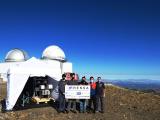
|
13/10/2020
El detector HENSA estudia los neutrones producidos por los rayos cósmicos desde el Observatorio de Sierra Nevada (OSN) El objetivo de estas medidas reside en la caracterización de la distribución de energías de neutrones producidos por rayos cósmicos, los denominados neutrones ambientales, durante el mínimo de actividad solar |

|
29/10/2020 - 17:00
Our Galactic Center: A Unique Laboratory for the Physics & Astrophysics of Black Holes The proximity of our Galaxy's center presents a unique opportunity to study a galactic nucleus with orders of magnitude higher spatial resolution than can be brought to bear on any other galaxy. After more than a decade of diffraction-limited imaging on large ground-based telescopes, the case for a supermassive black hole at the Galactic center has gone from a possibility to a certainty, thanks to measurements of individual stellar orbits. The... Dr. Andrea Ghez |

|
12/11/2020 - 12:30
SO web.Colloquio: GRAVITY+, all Sky, High Contrast, Milli-Arcsecond Optical Interferometric Imaging and Spectroscopy GRAVITY and the VLTI have transformed high angular resolution astronomy with groundbreaking results on the Galactic Center, active galactic nuclei, and exoplanets. The GRAVITY+ project will soon boost optical interferometry to the next level, opening up the extragalactic sky for milli-arcsecond resolution interferometric imaging, giving access to targets as faint as K = 22 mag, and providing ever higher contrast for the observation of... Dr. Frank Eisenhauer |
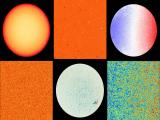
|
30/09/2020
Numero especial de A&A dedicado a Solar Orbiter Hoy se ha publicado un numero espacial de la revista Astronomy & Astrophysics dedicado a la misión Solar Orbiter (ESA, NASA) |

|
23/11/2020 - 27/11/2020
SOMACHINE Machine Learning, Big Data, and Deep Learning in Astronomy Granada |
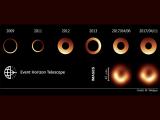
|
23/09/2020
El Telescopio del Horizonte de Sucesos muestra la “bamboleante” sombra del agujero negro de M87 Observaciones del Telescopio del Horizonte de Sucesos (EHT) desde 2009 a 2017 revelan una evolución turbulenta del agujero negro de M87. |

|
16/09/2020 - 17/09/2020
Scientific writing and presentation in Astronomy |

|
22/10/2020 - 12:30
We’ve never imaged the Sun’s surface from that close. Solar Orbiter will change that In February 10, 2020, Solar Orbiter, the new ESA's Sun-exploring mission built in collaboration with NASA, was successfully launched atop an ULA Atlas 5 rocket from Cape Canaveral in Florida. Equipped with ten instruments, six for remote sensing and four for in-situ measurements of the solar heliospheric conditions, it will get as close as 0.28 astronomical units (or 42 million kilometres) to the Sun in a mission that can last more than ten... Dr. David Orozco |

|
24/09/2020 - 12:30
The power of low activity black holes It is possible that most galaxies host a black hole at the centre, most of the time this being in a relatively quiescent state. The so-called low luminosity Active Galactic Nuclei are characteristic of this phase. These objects represent the vast majority of the active galactic nuclei (AGN) population in the near universe, and still the least conforming class with the standard AGN scenario. Their low luminosity is at odds with their often... Dr. Almudena Prieto |

|
09/09/2020
Se desvela el mecanismo molecular que conecta las emisiones oceánicas de yodo y la formación de partículas atmosféricas Se desvela el mecanismo molecular que conecta las emisiones oceánicas de yodo y la formación de partículas atmosféricas |
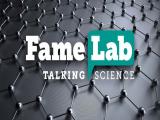
|
08/09/2020
Alicia Pelegrina, miembro del IAA-CSIC, obtiene el segundo premio en FameLab España 2020 Alicia Pelegrina, miembro del IAA-CSIC, obtiene el segundo premio en FameLab España 2020 |

|
19/11/2020 - 12:30
SO Web-Colloquia: Flaring on the Sun at all scales The Sun shows activity across a wide range of size and energy scales. We shall take a journey from the smallest scale events to the largest energy releases in the solar system. The energy release is due to the magnetic fields on the Sun and how they interact. Using EUV/UV spectroscopy different layers of the solar atmosphere can be probed in order to understand the physical processes that occur. The EUV imaging spectrometer onboard the Hinode... Dr. Louise Harra |

|
15/10/2020 - 12:30
So Web-Colloquia: The star formation process on cloud-scales in nearby galaxies Where do stars form and how is their formation regulated across galactic disks are two critical questions for our understanding of the star formation process. High angular observations of nearby galaxies allow us to sample the star formation process across entire galactic disks reaching now regularly the scales of the star-forming units, namely Giant Molecular Clouds (GMCs) and HII regions. Such data provide new insights on the molecular gas... Dr Eva Schinnerer |

|
08/10/2020 - 12:30
SO Web-Colloquia: Recent findings on nova explosions Nova events are the result of the interaction of low-mass binary systems. A compact white dwarf (WD) accretes material from an old and cold companion until a thermonuclear runaway takes place on its surface. Such explosive events can be considered the scaled-down siblings of supernova (SN) explosions, but its study has many advantages over SNe, as nova events are more numerous (some systems even exhibit recurrent explosions within decades) and... Dr. Toalá Sanz |

|
01/10/2020 - 12:30
SO Web-Colloquia: Following black hole evolution from z=5: mergers and outflows The growth and evolution of the most massive black holes, and their host galaxies, can be followed from z=7 and even earlier. The critical events that shape this evolution are major mergers, Eddington or super-Eddington accretion, violent star formation, and powerful outflows. I will present the results of a systematic study of 40 AGN at z~4.8 using Gemini, VLT, Herschel and ALMA. Our recent (2019) ALMA data allow a fresh look at major mergers... Dr. Hagai Netzer |

|
08/07/2021 - 12:30
SO Colloquium: TeV Halos and their connection to the Leptonic Cosmic Ray flux measured at the Earth The origin and propagation of cosmic rays (CRs) is one of the most important questions in astroparticle physics nowadays. CRs generated by known sources also serve as background to those putatively generated by more exotic phenomena such as dark matter. Apart from the known electrons of primary origin and positrons of secondary one, pulsars and sources powered by them are one of the main candidates to contribute to the total amount of CR... Dr. Rubén López-Coto |

|
25/06/2020 - 24/07/2020
Course on gender analysis in research |
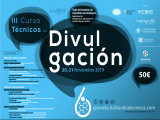
|
20/11/2019 - 21/11/2019
III Course on Scientific Dissemination Techniques Granada |

|
18/11/2019 - 22/11/2019
Tenth Gammapy Coding Sprint Granada |

|
01/07/2020 - 17/07/2020
Introductory course to astronomy and astrophysics Granada |

|
25/02/2020 - 29/02/2020
Open Science Droplets Granada |

|
11/11/2019 - 15/11/2019
SUNRISE III Technical Meeting Granada |

|
14/11/2019 - 15/11/2019
9th ACS Science Team Meeting Granada |
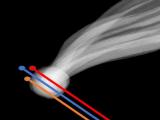
|
02/12/2019 - 03/12/2019
Comet Interceptor Full Team Meeting Granada |
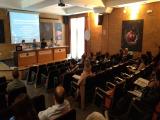
|
04/11/2019 - 08/11/2019
1st IAA-CSIC Severo Ochoa School on Statistics, Data Mining and Machine Learning Granada |

|
23/04/2019 - 23/04/2019
Seminar on Preparation of Proposals to the European Research Council (ERC) Granada |
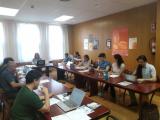
|
13/06/2019 - 13/06/2019
Key Aspects in the Preparation of a Competitive Proposal MSCA-IF Granada |
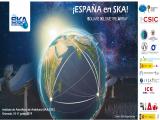
|
10/06/2019 - 11/06/2019
¡España en SKA! Granada |

|
05/11/2020 - 12:30
SO Web-Coloquia: The Arecibo Observatory Roadmap for the Future: science enhancement plans under UCF management The Arecibo Observatory (AO) has supported cutting-edge research in the fields of Astronomy, Planetary Science, and Space Atmospheric Science for decades. The unprecedented sensitivity of the Arecibo antenna has led to fundamental contributions in a wide variety of research programs, including the first detection of an exoplanet around pulsar (Wolszczan... Dr. Noemi Pinilla-Alonso |
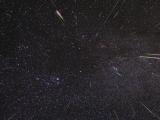
|
11/08/2020
Hoy comienza el máximo de las perseidas, o lágrimas de San Lorenzo A partir de hoy, 11 de agosto, podrán observarse hasta cincuenta perseidas por hora en lugares alejados de la contaminación lumínica. Se producen por el impacto en nuestra atmósfera de fragmentos de la nube de meteoroides del cometa 109P/Swift-Tuttle, y también se registran sobre la superficie de la Luna |
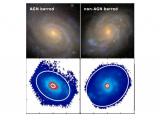
|
31/07/2020
Detectan por primera vez diferencias entre los discos galácticos de galaxias activas y no activas Primera evidencia de diferencias dinámicas a gran escala entre galaxias activas y no activas en el Universo cercano, |

|
29/07/2020
La embajadora de Israel en España visita el IAA-CSIC La embajadora de Israel en España visita el IAA-CSIC |
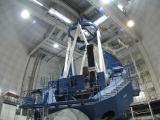
|
20/07/2020
Un prometedor futuro científico y tecnológico para Calar Alto Un prometedor futuro científico y tecnológico para Calar Alto |
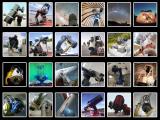
|
16/07/2020
Investigadores del IAA participan en GRANDMA, una red internacional para estudiar fuentes de ondas gravitatorias Investigadores del IAA participan en GRANDMA, una red internacional para estudiar fuentes de ondas gravitatorias |
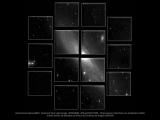
|
15/07/2020
Primera luz técnica de la cámara panorámica JPCam del Observatorio Astrofísico de Javalambre Primera luz técnica de la cámara panorámica JPCam del Observatorio Astrofísico de Javalambre |

|
13/07/2020
El instrumento SO/PHI, a bordo de la misión Solar Orbiter, obtiene el primer mapa magnético autónomo del Sol El instrumento SO/PHI, a bordo de la misión Solar Orbiter, obtiene el primer mapa magnético autónomo del Sol |

|
04/05/2021 - 12:30
SO Web-Colloquia: Thematic area 9 of the CSIC’s new White Book: Understanding the basic components of the Universe, its structure and evolution CSIC is about to publish a White Book to define its scientific strategy for the coming decades. The White Book contains chapters on 14 different thematic areas. One of the main goals of this exercise is to increase collaboration between research groups and institutes of the CSIC. Particular value is set on inter- and cross-disciplinary work. Each thematic area defines a set of “challenges”, key scientific questions for the coming decade(s) in... Dr. María José Costa and Dr. Rainer Schödel |

|
17/09/2020 - 12:30
SO Web-Colloquia: J-PAS: First light results of the JPCam The Javalambre-Physics of the Acclerating Universe Asptrohysical Survey (J-PAS) have just started to scan thousands of square degrees of the northern sky with 56 narrow band filters and the JPCam instrument with the telescope 2.5m of the Javalambre Observatory. Before the JPCam started its operation, we have observed with the pathfinder camera one sq. deg on the AEGIS field (along the extended Groth Strip). This colloquium will present the... Dr. Silvia Bonoli |
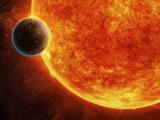
|
25/06/2020
Se hallan dos supertierras alrededor de la estrella enana roja más brillante de nuestro vecindario solar El Instituto de Astrofísica de Andalucía (IAA-CSIC) participa en el descubrimiento de un sistema planetario múltiple en torno a GJ887, una estrella situada a 10.7 años luz de distancia |
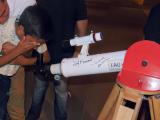
|
23/06/2020
Telescopios para todos Telescopios para inmigrantes y refugiados en Granada |

